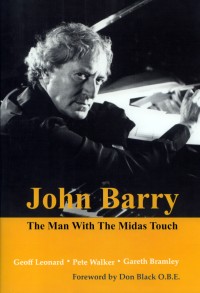The Robert Farnon CD that Never Was
THE ROBERT FARNON CD THAT NEVER WAS
By David Ades
On 30 & 31 October 1995, Robert Farnon was once again at the CTS Studios in Wembley, London, recording the orchestral backings for a new CD with the great American popular singer Eddie Fisher.
In a feature in JIM 125 (February 1996) it was hoped that this would be one of the most exciting new CD releases of standard repertoire that year. Eddie Fisher was reported to be full of eager anticipation for this project, which was expected to relaunch his career in a big way!
The JIM article continued: Eddie is now managed by Tino Barzie, who readers will recall recently guided the career of Pia Zadora, resulting in several superb albums which made sceptical critics eat their words.
It is hardly a similar situation with Eddie Fisher, who has been a big star for over 40 years. However he would probably agree that he has not exactly pushed himself to the forefront of the entertainment scene in recent years, but this new album is likely to do just that!
Vincent Falcone, previously Sinatra’s MD, is working closely with Eddie, and his great experience, plus Fisher’s undoubted talent, makes a combination hard to beat. Add Farnon’s brilliant scores, plus four swinging charts by Sammy Nestico, and you have a winning formula that can hardly fail.
Eddie Fisher was at the CTS Studios to listen in and guide the orchestral backings. As each score appeared on the music stands his enthusiasm grew, and the rich, warm Fisher tones could be heard soaring above the magnificent orchestra. The vocal tracks are being added in Los Angeles.
The basis of the Robert Farnon Orchestra this time is the London Philharmonic, leader Duncan Riddell ... 14 violins, 4 violas, 4 cellos, 2 French horns and harp. Added to that are the cream of London session players: Kenny Baker, Guy Barker, Steve Sidwell and Simon Gardner on trumpets; Don Lusher, Gordon Campbell, Bill Geldard, Mark Nightingale* and Cohn Sheen* on trombones; Roy Willox, Peter Hughes, Tommy Whittle, Duncan Lamont, Denis Walton* and Eddie Mordue* on saxes and woodwinds; Jim Lawless on percussion; Louis Stewart on guitar; Chris Lawrence on bass; and Jack Parnell on drums. Vincent Falcone was on electric piano. (*These players were not present on every session.)
The first three-hour session began at 2:30pm on Monday 30 October, and featured Robert Farnon conducting his arrangements of It Never Entered My Mind, April Showers, Oh my Papa and Love You Didn’t Do Right By Me. The evening session started with another run-through of Love You Didn’t Do Right By Me, followed by The Very Thought 0f You, My Shining Hour (this may well be the title track of the album), and My Funny Valentine. On the Tuesday afternoon Bob conducted My Foolish Heart, Love’s Been Good To Me and What Are You Doing The Rest Of Your Life? The rest of the Tuesday sessions were taken up with Vincent Falcone conducting the Sammy Nestico arrangements: Crazy On A Slow Boat to China, I Remember You and a medley comprising Wish You Were Here and Any Time.
……………………..
Fifteen years later we are still waiting for the CD to be issued. At the time we heard rumours that the producers were delaying its release until Eddie Fisher was available to undertake a tour of radio and television stations in the USA to promote the album, but it seems he was unwilling to commit to it.
Now that he has passed on (his obituary appears on page xx of this issue) is it possible that the CD may finally reach the record stores? It is well known that the death of an artist seems to result in an upsurge in interest of their work. The producers must have invested a lot of money in the original sessions – perhaps they may now be considering recouping it.
When he heard the test results (after Fisher’s vocals had been added in the USA) Robert Farnon confided to us that he was a little unhappy with the way in which some choral passages intruded on his original arrangements. Also it has to be said that Fisher’s voice had passed its prime.
The results could have damaged his reputation, which possibly was the real reason why these sessions produced "The CD That Never Was".
This article originally appeared in ‘Journal Into Melody’, December 2010


